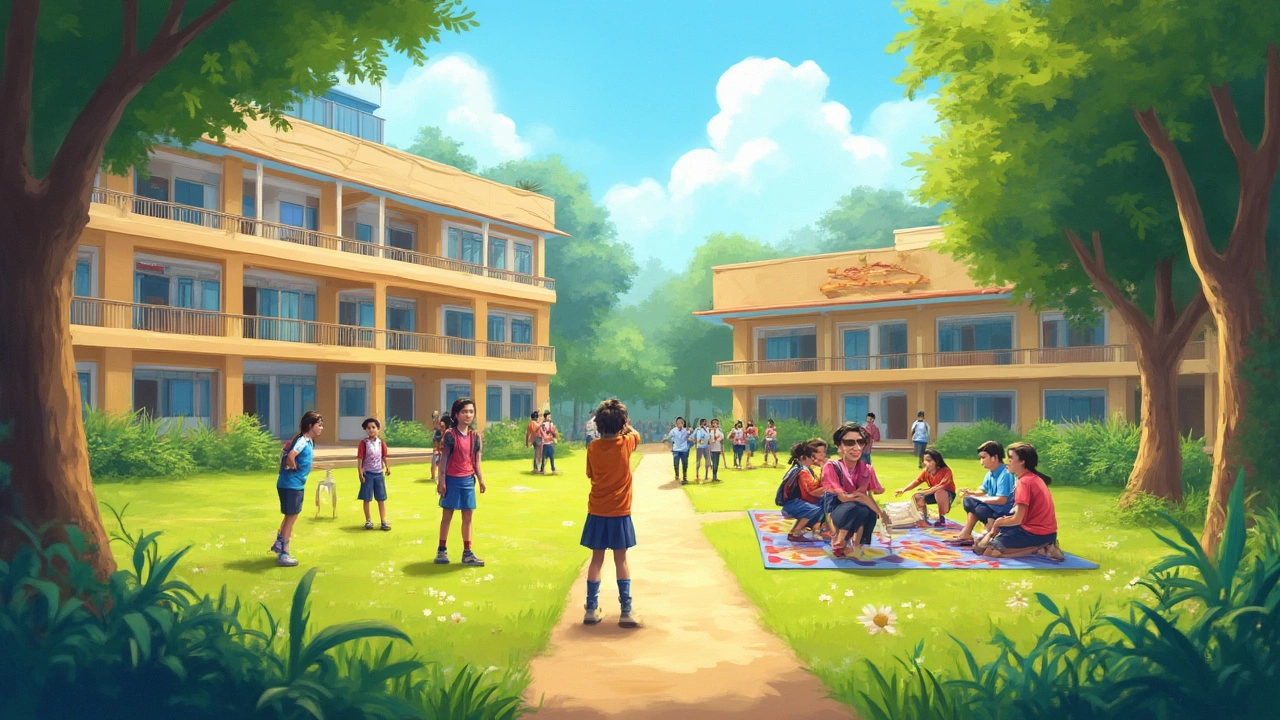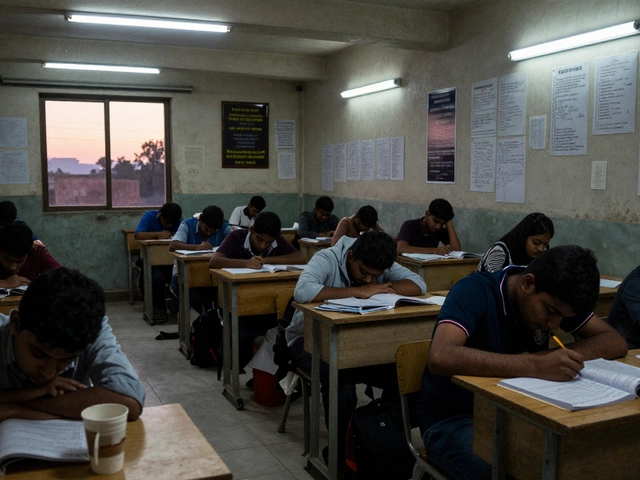Imagine having to decide a huge chunk of your child’s future before they’re even old enough to order their own food. That’s pretty much what choosing between the British and CBSE curriculums feels like. The school board you pick shapes teaching styles, exams, and even university doors that could open down the road. The stakes aren’t small—this isn’t just about textbooks and uniform colors; it’s about a mindset, a lifestyle, and a whole lot of practical outcomes. You don’t want to wake up one day realizing the board’s structure left your kid struggling with confidence, skills, or entry requirements. And since schools don’t exactly hang up “buyer beware” signs, let’s strip this down to what really matters: which curriculum gets your child ready for real life (and maybe Harvard too).
Understanding the Basics: What Sets CBSE and British Curriculums Apart?
The CBSE, or Central Board of Secondary Education, is the gold standard for Indian schools. It’s tried, tested, and embraced by almost 27,000 schools worldwide, including those in the UAE, Singapore, and more. The focus here is on science, math, social studies, languages, and regular, uniform syllabi across India. The curriculum is set by the NCERT, and exams—especially in grade 10 and 12—are the stuff of legend: high-pressure, high-stakes, and highly standardized. The board’s motto? Think efficiently. Master test-taking. Score big. Get into IITs. So if the endgame is Indian entrance exams like NEET, JEE-Main, or the UPSC, CBSE literally serves you the material on a platter.
Meanwhile, the British curriculum has a different flavor. Styled after the National Curriculum of England, it’s followed in more than 160 countries and heavily popular in international schools across India. The key highlight? Flexibility. Kids pick subjects they like from an early age. English, math, and science serve as core, but then there are options: design tech, drama, psychology, economics, you name it. Students take exams called IGCSEs at age 16 and A-Levels at 18. Here, the approach is less about memorizing, more about exploring concepts, independent thinking, and practical application. You might walk into a British-curriculum class and find teens dissecting novels for hidden symbolism or presenting science projects with real-world relevance.
Here’s a handy comparison:
| Aspect | CBSE | British Curriculum |
|---|---|---|
| Reach | Widely accepted in India | Preferred by international schools, accepted globally |
| Structure | Rigid, standardized, exam-focused | Flexible, subject choices, graded coursework |
| Exams | Board exams (Grade 10, 12) | IGCSEs (16 yrs), A-Levels (18 yrs) |
| Approach | Theoretical, textbook-heavy, test mastery | Conceptual, application-based, skill focused |
| Recognition | Top Indian colleges/universities | Global universities, Indian acceptance growing |
| Language of Instruction | English/Hindi | English |
One more fun fact: Top Indian ed-tech companies say over 80% of students who go for NEET and JEE come from CBSE. But then, Cambridge Assessment (which runs IGCSEs) also claims that their graduates tend to do better at problem-solving at university level. It’s a classic "apples vs oranges" scenario when you look at future ambitions.

How Classroom Life and Assessment Actually Feel Day to Day
Now, let’s talk about what a regular weekday looks like for students. In a typical CBSE school, mornings kick off with assembly and a fixed set of books tucked into overstuffed backpacks. Most teachers stick to NCERT texts and follow a strict timeline to “complete the syllabus,” because everyone is thinking about that final exam. There’s homework, often repetitive, and the real worker bees shine here—if your child learns well through revision, tests, and teacher direction, they’ll feel right at home. Experimental learning and debates aren’t the top priority. Marks matter, and so does being able to write the exact answer the board expects.
Flip to a British curriculum classroom, and you might spot students spread out in small discussion groups. A literature class could look like a mini TED talk. Science labs are less “follow the steps” and more “find the answer yourself.” Assessments happen in two ways: finals do matter, but so do in-class projects, laboratory notebooks, presentations, and oral exams. Coursework can make up 40–60% of your final grade, especially at A-levels. This is huge if your child gets exam nerves or is better at showing what they’ve learned over time rather than in one killer test. And for students who are hands-on, creative, or analytical, the British curriculum gives more breathing room to show off what they’re good at.
Cultural exposure? Another point to consider. International schools running the British curriculum attract expats and Indian kids alike, so you’ll see higher diversity. It’s easier to pick-up global perspectives, global accents, and sometimes even land international internships. CBSE schools lean desi, which is awesome for feeling rooted, developing network ties that last a lifetime, and nailing Indian languages. If your family moves countries often, a British curriculum can offer continuity; a CBSE student, though, will find smooth transitions when moving between Indian states and cities.
Here’s something wild: a 2023 study in The Hindu showed students in British system schools reported fewer hours of rote memorization and higher satisfaction scores with "learning experience." But CBSE kids felt they were better prepped for timed tests and public exams.
- If your child wants to pursue science or medicine in India, CBSE fits best since entrance tests align closely with the syllabus.
- For global ambitions, or if university abroad is a serious possibility, A-levels and IGCSEs can pay off. They’re better known in the UK, Europe, and even in the US.
- Some Indian private universities accept A-levels, but keep an eye on subject-matching requirements.
- CBSE is cheaper—both in tuition and exam fees. British-curriculum schools are rarely budget-friendly.
- Switching between boards? Early is better. Moving after grade 8 or 9 can mean catching up on basics or missing prerequisites.
One pain point worth flagging: CBSE’s focus on test scores means parents and kids bear the burden of performance anxiety and extra coaching. British-curriculum kids might deal with more work spread out over the year, but less "all or nothing" exam pressure.

Choosing What Actually Fits—Not Just What’s Popular
This isn’t about which curriculum is "better" for everyone. It’s about which is better for CBSE students with specific dreams, learning styles, and family situations—or, if you want that all-out global ticket, the British path. Here’s a reality check: neither system is perfect. Both pump out millionaires, world-changers, and regular folks. The British curriculum, with its project-heavy style, may help your kid stand out if they’re applying for a creative course in a top UK or Australian university. But switch gears to cracking IIT or becoming a doctor here in India, and CBSE is like a finely-tuned launchpad tailored for local success.
Worried about pressure? CBSE can feel relentless during boards, while the British system expects kids to work as self-motivated learners from a younger age. One practical tip is to talk to real students and parents in both systems—ask about homework, teacher quality, and the kind of kids who thrive. Some students love CBSE’s tight schedule. Others need the loose, self-steering train that the British curriculum provides. And if your family moves a lot for work, think about where you’re likely to be in three years. Younger children adapt faster, but high school board switches are tricky.
If your child is still exploring or unsure of a rigid career track, the British board’s subject choice system lets them keep doors open. You can ditch a hated class at A-levels—try that with CBSE, and it’s a mountain of board regulations. Fun fact: many Indian students who switched to a British curriculum reported stronger college application essays and more confidence at international summer programs. But the flipside is this: not every Indian college is clear about British grades, so you might need official conversion charts (ICSE, ISC, IB students face similar headaches).
Here’s a shortlist to weigh as you ponder this life-altering choice:
- Map your child’s interests early. Science, law, creative arts, entrepreneurship—see where each curriculum shines for that career.
- Cost counts. British-system schools can cost two to four times more than many CBSE schools in the same city.
- Think about relocation. Are you likely to move countries? British curriculum brings easier school transfers abroad. CBSE is ideal for intra-India moves.
- Visit schools, chat with teachers, join open days. Real-world vibes mean more than glossy brochures.
- Don’t stress about "board brand." Kids with strong support systems and curiosity thrive anywhere. The curriculum sets the stage, but attitude wins the race.
Everyone worries about making the "right" call. The truth? It’s rarely clear-cut. The CBSE board is built for competitive Indian exams, structure, and discipline. The British board bets on skills, confidence, and flexibility for a global world. Don’t just look at league tables or magazine raves—think about your kid’s personality now and picture them in five years. Sometimes, what looks bold today becomes your sanity-saver tomorrow. That’s the honest, boots-on-the-ground truth from a guy who has seen both sides of the classroom fence.





